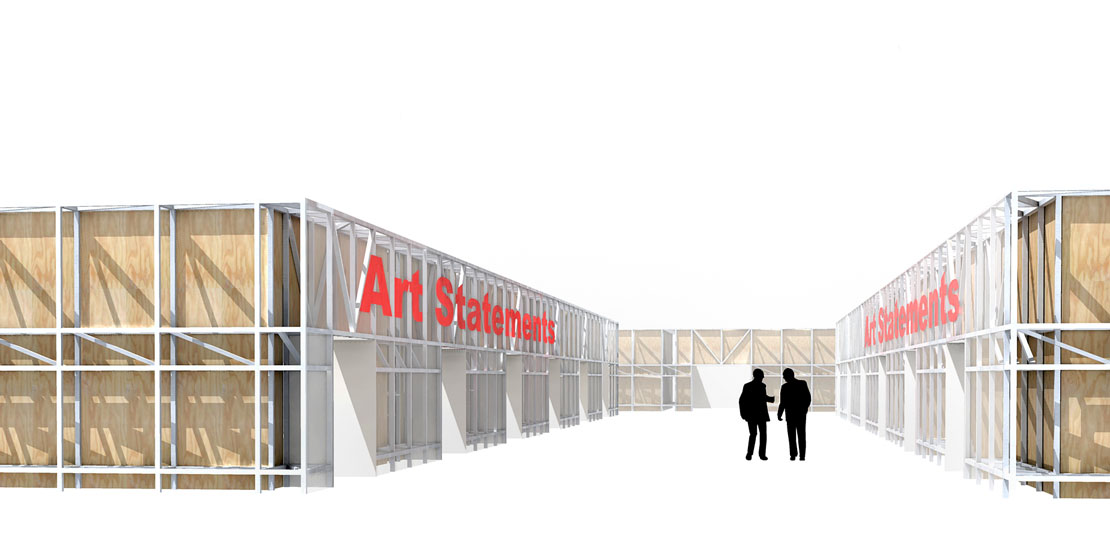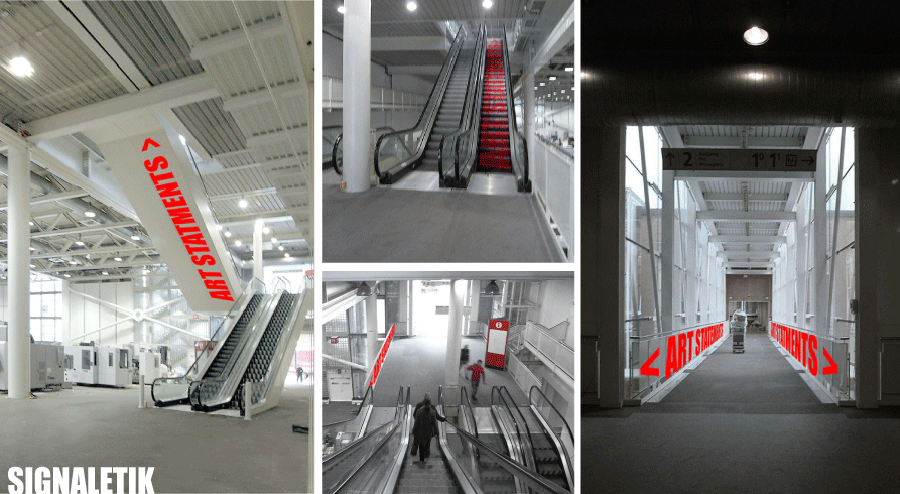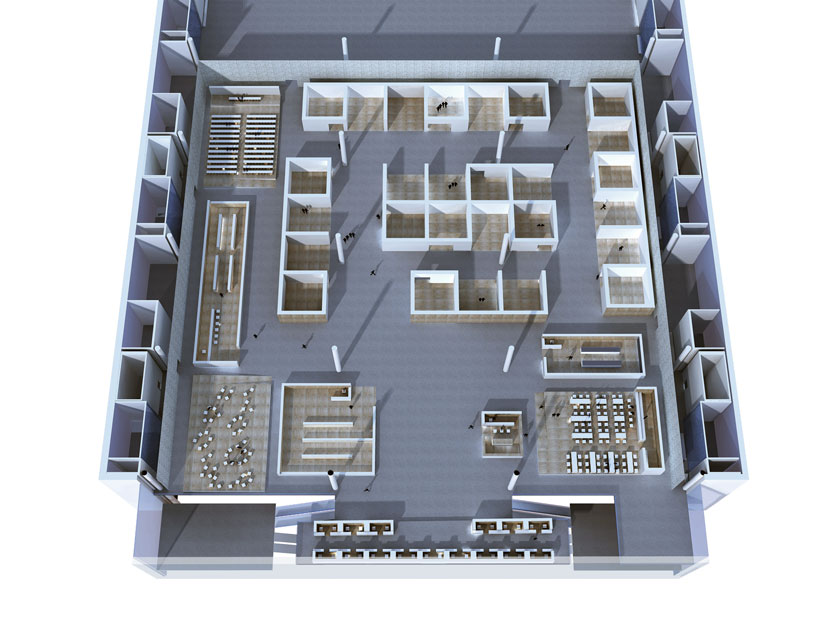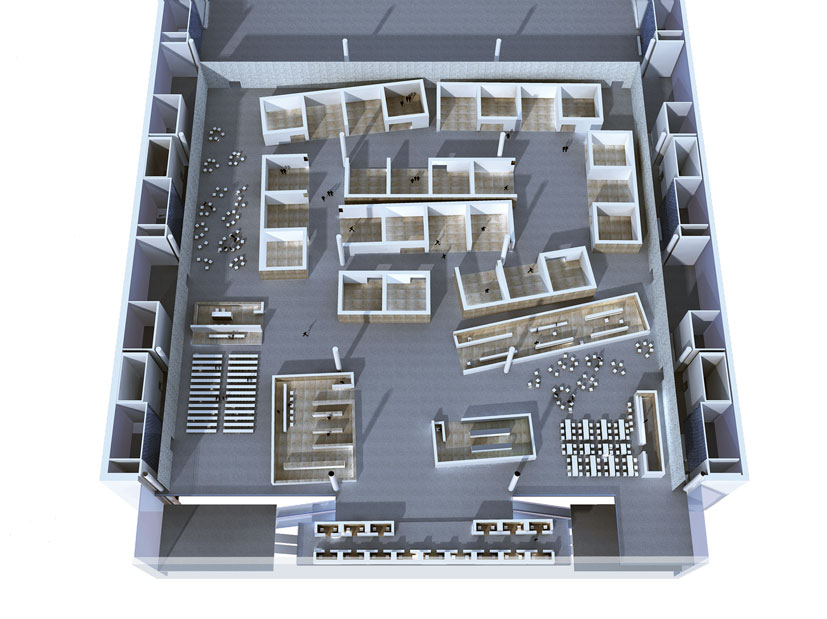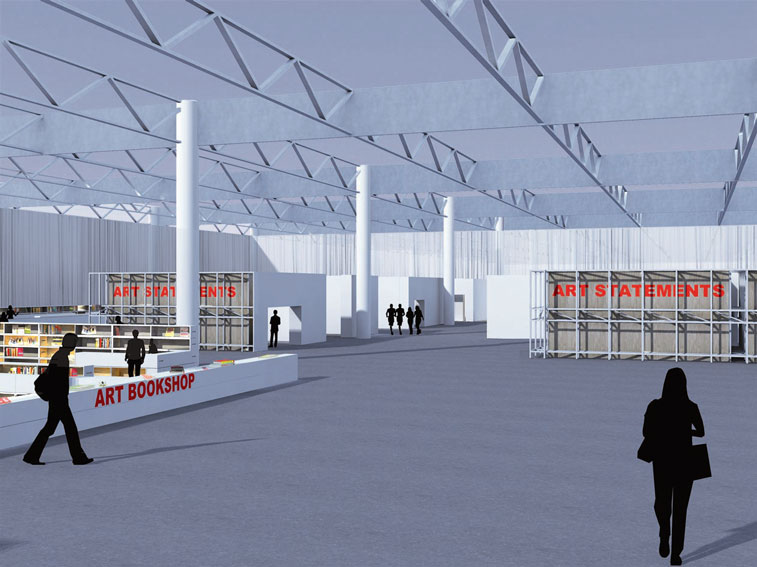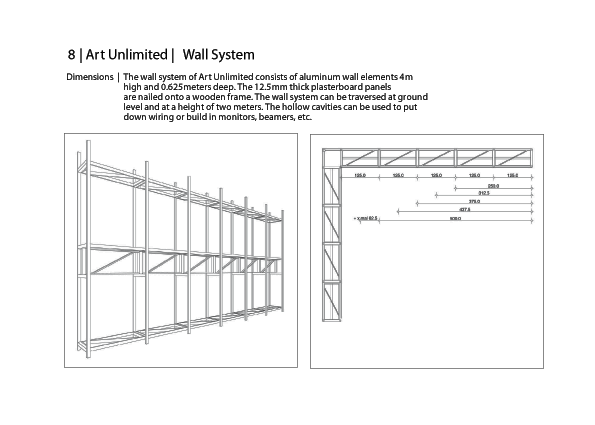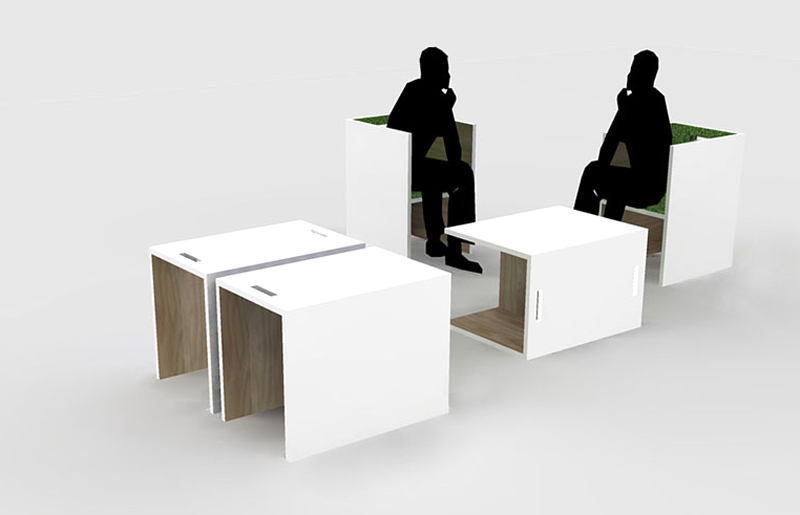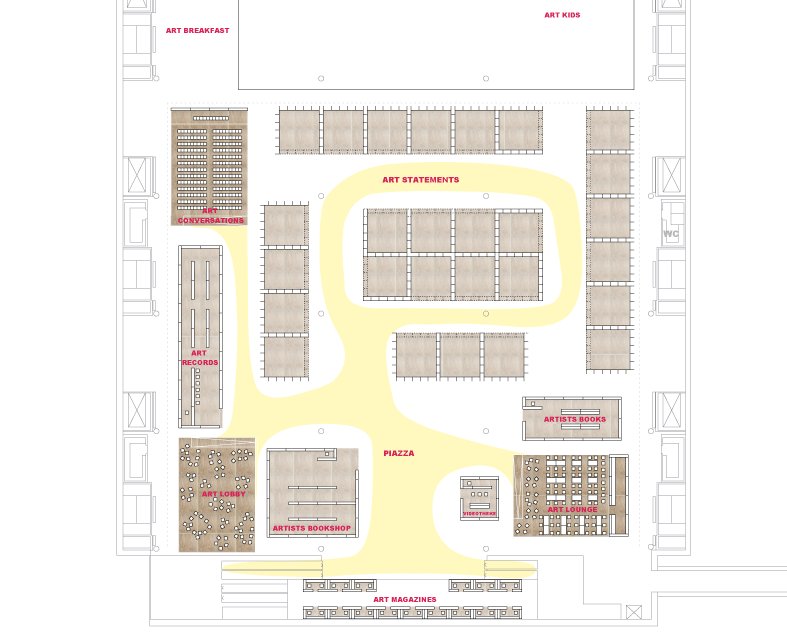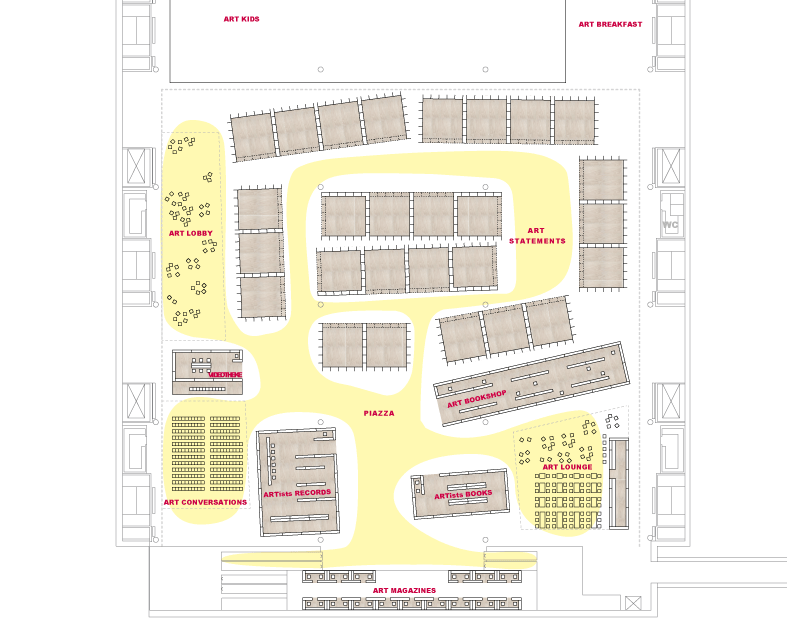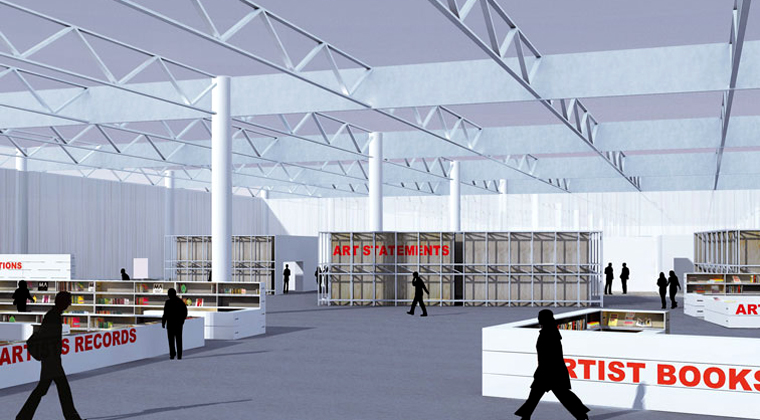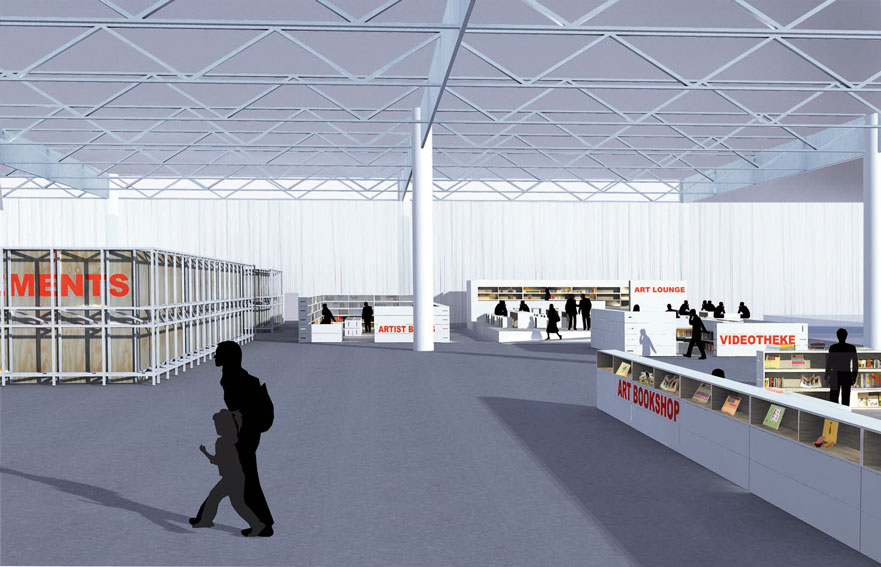potempkin
project | Potemkin project Art Statements, Art Basel |
type | invited competition |
size | 5’000 m2 |
budget | 300’000 CHF |
client | Art Basel |
collaboration |
XPACE architecture + urban design with Fuhrimann Hächler Architekten |
location | Basel, Switzerland |
year | 2008 |
The aim of the Art Basel exhibition concept was to achieve a minimal design, which gives precedence to functionality and content. The reduction increases aesthetic value, re-centres the artwork, and responds to times of economic crisis. The limited budget led us to use only 4 elements: white paint, red signage, plywood and the standard industrial substructure of the Art Basel.
The visitor is led into the exhibition by large red letterings in the recognizable ‘Art’ colour and font. The distinctive graphics support orientation and create simple but attractive visual impact, in the tradition of the Swiss typographic school.
The spatial layout consists of functional boxes of different sizes. These buildings are arranged to form a small city, which invites the flaneur to discover its narrow streets, squares, cafes and art shops. Different urban configurations are possible, and the city is intended to change every year, to invite for new discovery within a familiar environment.
The squares are inhibited by more public programmes like the ‘Art restaurant’ and then ‘Artist lounge’, while more enclosed piazzettas define the ‘Art conversation’ area… The flexibility of the system allows absorbing changes in size and programme from one year to another.
The boxes are built using a standard metallic substructure. Unlike normally, their exteriors remain uncladded, revealing the aesthetic framework. This conveys an unpretentious character to the exhibition. The Art city appears as a temporary Potemkin village. The raw plywood texture is revealed on the outside and painted on the inside.
The exterior contrasts with the pristine white cube interior to create moments of focus on the artworks. For other programmes, white and natural panels are alternated to create a varied appearance.
The furniture is formed by modular elements, which can be added up to form counters of different heights. Seating modules can be flipped around and used as stools or side tables. Rental folding-tables and beanbags complement the modular elements.
| code | potempkin |
| project | art statements, art basel |
| type | invited competition |
| size | 5’000 m2 |
| budget | 300’000 CHF |
| client | art basel |
| collaboration | andreas fuhrimann, gabrielle hächler architekten |
| location | basel, ch |
| year | 2008 |
